The Story Behind Peg 2906
by Norman Cho
How many of us believe in the unexplained? There are reasons why certain things happen unexpectedly. But are we receptive enough to take the cue from such signs? One recent account was of tomb 481 which was pegged 2906 at Bukit Brown Cemetery, slated for exhumation to make way for the 8 lane highway due to slice the cemetery in half by 2017/
A post about the Ee Hoe Hean Club in the Facebook page of Heritage Singapore – Bukit Brown Cemetery, spurred me to do a search on my granduncle, Mr Tan Kay Tiang (ie) the husband of my paternal grandmother’s second sister, Mdm Yeo Say Neo. Grandmother had once told me that he worked for an exclusive millionaires’ club called the Ee Hoe Hean Club. No details of the position which he held or the period where he was under their employment were given.
Out of curiosity, I did a Google search over the internet and found to my astonishment that he was buried in Bukit Brown Cemetery and that his tomb was marked for exhumation with the peg number 2906.
I made a few enquiries and discovered that the tomb had yet to be claimed and that it was due for exhumation in only three weeks! I tried to contact the deceased’s three grandchildren unsuccessfully to make a claim. They are in their fifties and sixties and I sensed their reluctance. They probably have their reasons to decide not to do anything about it.
Looking back, I realised that discovering his tomb just three weeks before the exhumation was no mere coincidence! Possibly, he was trying to reach out to someone to handle his exhumation and to relocate him during the desperate final few weeks. I felt very uncomfortable if I did nothing about it and so I decided to claim the tomb on behalf of the family. To make sure that I had identified the correct tomb, I verified the name of his only child on the headstone – 月娘which corresponded with the name of my late aunt, Guek (Guat) Neo. I found a newspaper article in the online digital archive (Newspapersg) which confirmed the identity of the tomb.
Family accounts has it that he died due to septic wound on his foot caused by a nail which he accidentally stepped on. He had concealed nails on the ground along the exterior wall of his house at Neil Road to deter thieves. The irony was not lost on me that these nails were what caused his death, A newspaper report in The Straits Times, 19 June 1938, “Nail Causes Man’s Death” returned a verdict of misadventure. The date of death on the tomb was 10 June 1938.
Tan Kay Tiang married my grandaunt, Yeo Say Neo, in 1923 at his family home in Neil Road. He was 39 and she was 27. During those days when people commonly married in their teens, they were considered an old couple. The couple stayed together with Kay Tiang’s widowed elder sister and his mother.
My grandmother recalled visiting the 3-storey townhouse and was intrigued by the many carpets that she saw on each floor. The couple had their first and only child, a daughter, Guek Neo, in 1925. He was a doting father who was known to piggy-back his daughter till she was nine or ten. The maid would take over after he was tired. As a child, my aunt was thoroughly spoilt and there was an account where the maid was made to walk the dark alley to buy her favorite char siew pau for her supper.
After her father’s death when she was twelve, Guek Neo’s life took a drastic change. She had become a sensible young lady. The house was sold several years later and Guek Neo was arranged to be married to a Baba named Robert Chia, the son of a well-known nyonya medium in the 1920s and 30s who was known by the name “Ah Lian Potong Lemo” She could predict fortunes by reading the sliced limes.
Mrs Tan Kay Tiang (Yeo Say Neo) was the ideal wife and homemaker. She excelled in cooking and sewing. She was soft-spoken and mild-tempered. She did not gamble and hardly stepped out of the house. The maid would run all the family errands and do the marketing. To supplement her living expenses after the death of her husband, she made nyonya kueh which her maid would take to the coffee shop at Joo Chiat Road to sell. She eventually had to let her maid go as she could no longer afford to keep her but the maid was reluctant to leave her and stayed on for a few more years.
***
A footnote:
Every tomb is a repository of personal stories of the family that was left behind
Moving forward 76 years later, I had made a claim for the tomb to be exhumed on 14 July 2014 and the remains to be re interred at Block E0116-202 in Choa Chu Kang Columbarium. It would be easier for me to visit since most of my relatives are placed there. He was buried in the traditional Chinese coffin which was relatively intact and had several funeral artifacts which included miniature clay kitchen utensils and two pieces of circular glass which I suspect could be reading glasses – one concave and the other bi-convex.
About Norman Cho:
Norman Cho is a regular contributor to atBB and guest blogs about his search for his roots and Penanakan material culture. He is the founder of the facebook group Peranakan Material Culture
You can find out more about Norman’s search for his roots here and here and posts about Peranakan culture here and here.
Sharing our feedback on Bukit Brown in the Draft Masterplan. We are grateful to all who wrote and shared your feedback with us. Without your support, awareness of Bukit Brown would not be where it is now – not just a talking point but- a rallying point to enrich our identity, a respect for our heritage and a Singapore we can all call home. We are humbled.
***
“We met as volunteers and in response to a groundswell of feedback after the announcement of the plan for Bukit Brown, formed All Things Bukit Brown as a loose group of volunteers to support amateur historian Raymond Goh, people who might want to contribute time, research, translation skills, etc to raise awareness of the value of Bukit Brown. We subsequently created the blog, All Things Bukit Brown, (http://bukitbrown.com) and started organising social events onsite in December 2011 to gauge interest in Bukit Brown as a destination. We were happily surprised by the enthusiastic turn-out for 3-4 events and started guiding tours onsite with whatever knowledge we received from February 2012.
Since then, we have cobbled together a dozen committed volunteers who research and/or guide. We are pleased to report that in that time, we have guided 10,000 people to Bukit Brown, including secondary schools and tertiary institutions, overseas academics, and participants from the Lee Kuan Yew School of Public Policy and the Civil Service College. Former Foreign Minister George Yeo was an early visitor guided. We have also guided grassroots communities led by their MPs, including DPM Tharman Shanmugaratnam and Sylvia Lim. This weekend, Minister of State for National Development Desmond Lee will bring his grassroots community there too. Groups which have come include the elderly Chinese, the hearing impaired and the docents from the Sun Yat Sen Nanyang Memorial Hall , National and Peranakan Museums.
Bukit Brown has already inspired the students of Pioneer Junior College to co- write the book “1911 Revolution: Singapore Pioneers in Bukit Brown” which was launched last Friday at the Sun Yat Sen Nanyang Memorial Hall. On our part we have applied for a grant from the National Heritage Board to put together useful information we have gathered over the past two years as a guide book to Bukit Brown.
Imagine this, a grassroots effort to bring 10,000 people to a site without any amenities – no toilets, drinks stalls, resting stations, shelter from the rain, marked trails or trash bins. How much more can we do together when we put our resources together? Give us a chance.
As Singaporeans, we are very proud to share what knowledge we have and encourage interest in Bukit Brown. We have met many engaged Singaporeans, academics, students, tourists, photographers, artists, etc – a diversity of participants who have reinforced the notion that Bukit Brown is more than a cemetery but a public space that draws different communities there for different reasons. We are witness to the grassroots movement which has built up a valuable community with a strong outreach component. We hope that you see this element of a place in fostering communal ties and meaning. These are valuable to building a strong and cohesive society, people rooted to their identities and bringing Singaporeans and residents together in a meaningful way. It is not something that can be easily replicated without the actual space that first drew us together in the first place.
It is this community-building effort that also drew the attention of the World Monuments Fund in awarding Bukit Brown World Monuments Watch status. We are proud of this international recognition and hope that one day, we can twin Bukit Brown with the Botanic Gardens for a unique world heritage site unmatched anywhere else in the world. That it is set in such lush and spectacular settings makes Bukit Brown all the more special.
State recognition of Bukit Brown’s intrinsic value will lift tourist awareness of Singapore in a different way, opening up ideas (and revenue streams) for education tourism, battle site tourism, cultural tourism etc in the same way medical tourism has brought international attention (and revenue) to the world-class medical services available in Singapore. Already, heritage associations in the region, specifically Penang and Malacca, have displayed keen interest in Bukit Brown and we hope there would be attendant tourism effects for the better good of Singapore and her neighbours. Not only would Singapore benefit from state recognition of the heritage value of Bukit Brown, we can work together with tourism agencies around the region and reap the benefits of good neighbourliness and joint tourism campaigns. Indeed, we are not short on ideas. We ask for the state to demonstrate leadership in this.
We hope you will protect Bukit Brown and Singapore’s historical, cultural, wartime and natural heritage for future generations, and will have an open discussion on how best to protect Bukit Brown and other heritage and nature sites affected by the proposals in the URA Draft Master Plan 2013. National development includes supporting our Nation’s sense of identity and belonging across generations in addition to infrastructure.”
Claire Leow & Catherine Lim
A call was made to the community to provide feedback to the Ministry of National Development (MND), to preserve Bukit Brown as a heritage site for future generations in the draft Master plan 2013. The closing date for feedback is 19th December 2013. For those who don’t know how to begin, there is a template available to guide you here. We encourage you to copy the email to your MP.
To those who have written, We Thank You. Some of you have shared your letters with us. We gratefully reproduce extracts with your kind permission, with the hope it will inspire others to write in and give their feedback.
If you wish to share your feedback with the community, please bcc your letter to MND to a.t.bukitbrown@gmail.com
———————————————————————————————————————————————————–
“We are custodians of our country’s heritage not just for ourselves but for our future generations. It is important that they continue to see for themselves how respect is being shown to our forebears and learn the very real lesson of conserving our roots even, or especially in the face of rapid urban development. Precious “history lesson materials” like Bukit Brown, once lost, may never be recovered. Let no regret come about.”
***
Eugene Tay
“The biggest threat to Singapore is apathy, and when Singaporeans do not feel a sense of belonging and are not bothered with what goes on here, then Singapore is in trouble. For Singapore to survive and prosper in the long term, it is necessary to have more opportunities in preserving our shared memories and creating our shared vision. And preserving Bukit Brown is an excellent opportunity that enables Singaporeans to feel that they belong here by remembering our past and creating our future.
Bukit Brown tells the stories of our forefathers who built Singapore, and creates opportunities for history education and discovery. The cemetery connects Singapore’s past and present, and allows us to understand that Singapore’s success is built up by our forefathers’ sweat and tears, and should not be taken for granted. We should preserve Bukit Brown because it helps us remember our past and keeps us rooted to Singapore.
Bukit Brown presents the opportunity for transforming the cemetery into a world-class living outdoor museum or heritage park. If this transformation adopts a bottom-up approach and with stakeholder engagement, it would allow us to come together, plan and work towards a future Singapore where heritage, nature and our economic needs can co-exist. We should preserve Bukit Brown because it enables us to work together and build bonds and resilience, and to create a space where our children and their children can enjoy and be proud of.
Singapore is a young nation and needs more common spaces like Bukit Brown to remind us how we got here and why this is home, and to create opportunities for building our future social resilience.”
Joyce Chew
“I am a fourth generation Singaporean. My great-grandfather, Chew Boon Lay, was one of Singapore’s very important pioneers.
In April 2012, my parents and I, along with my husband who is English, and our 2 children, discovered where my great-grandfather was buried in Bukit Brown. Thanks to a Straits Times journalist who did a photo-editorial on several important pioneers’ descendants, a photo shoot was conducted at the site of Chew Boon Lay’s tomb.
My parents who had not been to his tomb in more than 20 years came along as well, as did many of my extended family of cousins, uncles, and other relatives. Despite my parents both being aged and not able to walk or see well, they both made the uphill trek to Chew Boon Lay’s tomb in the dark as a huge storm was looming. That was such an important day for them and my family. I was re-acquainted with many relatives and met some whom I had never even met before. We have had several family gatherings since and as such, our April 2012 ‘reunion’ at Chew Boon Lay’s tomb in Bukit Brown served as a very important point of re-connecting with long lost relatives.
My father who is 83 was so elated to have been able to visit his grandfather’s tomb and pay respects to him again after such a long period of time. He was even happier to meet his many nieces, nephews, grand-nieces and grand-nephews, many of whom he had never met before. My siblings live abroad and when they returned to Singapore, I brought them to my great-grandfather’s tomb. All of them were so amazed at how peaceful and beautiful Bukit Brown is, but more importantly they were so happy to be able to visit our great-grandfather’s tomb for the first time.
Having reconnected with my Singapore roots via my great-grandfather’s tomb, I feel so proud to be a 4th generation Singaporean of an important Singapore pioneer who had such humble beginnings and contributed much to Singapore’s growth and prosperity. My children are both Singaporean and English and I want them to grow up feeling connected to Singapore and to be able to trace their roots in Singapore back to my great-grandfather. It was important for me that they visit his tomb and pay respects to their great-great-grandfather and to feel proud to be his descendants. I want them to be able to do this when they are older and when I am no longer around….such a connection in our young country that is forever trying to modernize and improve itself is, for me, one of the most important things if we want our children to have roots in, and feel connected to, Singapore.”
***
Other than the Bukit Timah Nature Reserves, Bukit Brown is a another place where I can bring my families out to Experience nature in a SAFE environment. National Parks are wonderful but they do not give the sense of one totally immersing in Nature.
“We are in a jungle.” my 6 year old boy Isaac said that with excitement when I brought him to the Bukit Brown. We have built too many shopping malls and what values are we cultivating when weekend we see Singaporeans crowding the malls and yet complaining that we are bored to death? Our souls are not fed with Nature but shopping malls and how would that make us as a Nation? We fly out of the country during school holidays to visit other country’s nature while we are destroying one in our own backyard? An article written by a 12 year old lavanyaprakash on Bukit Brown reminded me how important it is to preserve such AUTHENTIC nature and to educate Singaporeans on Nature Outings. I want my children’s generations to be able to experience this Nature and not just Bukit Timah Reserves or other man made National Parks. Thus, not only it is a National Heritage to be preserved, it is a World Heritage to be preserved!”
Other than the Bukit Timah Nature Reserves, Bukit Brown is a another place where I can bring my families out to Experience nature in a SAFE environment. National Parks are wonderful but they do not give the sense of one totally immersing in Nature. “We are in a jungle.” my 6 year old boy Isaac said that with excitement when I brought him to the Bukit Brown. We have built too many shopping malls and what values are we cultivating when weekend we see Singaporeans crowding the malls and yet complaining that we are bored to death? Our souls are not fed with Nature but shopping malls and how would that make us as a Nation? We fly out of the country during school holidays to visit other country’s nature while we are destroying one in our own backyard? An article written by a 12 year old lavanyaprakash on Bukit Brown reminded me how important it is to preserve such AUTHENTIC nature and to educate Singaporeans on Nature Outings. I want my children’s generations to be able to experience this Nature and not just Bukit Timah Reserves or other man made National Parks. Thus, not only it is a National Heritage to be preserved, it is a World Heritage to be preserved!”
***
Ang Hock Chuan
“As recently as September 2011, Bukit Brown was just another cemetery to me. I only remember it as the place I learnt to drive and as the place my grandfather was buried.
My father visited his father’s tomb every Ching Ming till an illness made it difficult for him to walk in that terrain. He had prepared for the eventuality of exhumation and already bought a niche for my grandfather. Unfortunately, I stopped following my father to visit years ago and forgotten where my grandfather was buried.
When my father passed away a few years ago, I became interested to look for my grandfather’s tomb. It would be the last thing I could do for my father to ensure his father’s remains are properly taken care of.
When I heard the news about the proposed highway, there was an urgency to locate my grandfather. I started to search for people who can help me locate him and stumbled on a group of volunteers sharing about Bukit Brown.
My initial interest was to look for my grandfather’s tomb and determine if it would be affected so I can make the necessary arrangements to relocate him.
I joined their guided tours in October 2011. That opened up my eyes to the rich heritage and history contained in Bukit Brown.
Over many visits I was also introduced to the rich bio-diversity and wildlife thriving in this habitat. Whilst I enjoyed listening to the birds in the woods, I was never an avid bird-watcher. But now, I keep a look out for the birds when I am there. I have seen uncommon and endangered species like the Changeable Hawk Eagle, the Red Jungle Fowl, the Greater Coucal and still learning each day about the special flora and fauna of Singapore there.
Bukit Brown turned into a living museum and classroom for me. History came alive. Our cultural heritage is enshrined here. A rich bio-diversity thrives here. It has an aesthetic beauty not found in our man-made parks. I count it my good fortune to have learnt about and visited this wonderful piece of our heritage before any wanton destruction takes place.
For these reasons and more, I hope to see Bukit Brown preserved, for our children’s and grandchildren’s sake. Once lost, lost forever.”
***
Alvin Lee
“We need not look any further than to Bukit Brown when we try to form our Singapore Identity because it is there for all to see. It is a living museum of our rich history that reminds us that our forefathers were migrants from various lands who decided to root themselves here in the Straits Settlement of Singapore, and we are their proud offspring. The fact that Singapore started as a migrant nation also helps us understand and welcome those who come here today, like our forefathers, to seek their fortune and make Singapore their home.”
Arielle Ng Rae
As a local student and youth, I finally took the time out today to join one of the tour groups organised by SOS Bukit Brown today, which I have been wanting to do ever since my ‘A’-levels finished. I was pleasantly surprised with the beauty and heritage of the site, but I was also incredibly saddened. The tour guides were very passionate and knowledgeable about local heritage, and the knowledge I gained today about Singapore and its roots, about how the locals worked together with a myriad of other races to form modern Singapore, about the roots of our unique culture that we often take for granted, made me the proudest of Singapore that I have ever been.
Through the tour, I finally appreciated exactly what it meant to be a melting pot of diverse cultures– how our customs came to be and as a result, how unique we are, and, ironically, the beauty of globalization in contributing to our shared heritage.
I plead with the most earnest and sincere heart, that you will protect Bukit Brown, for the sake of Singaporeans, who are fast becoming disillusioned with this city-state. This tour has done nothing but cement my love for Singapore and my pride for it, and I want many of my peers to feel the same. It is perhaps the natural state of the cemetery, and the untouched beauty of the landscape that lent this genuine connection and pride, but whatever it is, Bukit Brown cemetery has proven to be a beautiful reminder of what it once meant to be Singaporean, and what it could mean for future generations to come.
***
Ian Chong
“Bukit Brown has helped me achieve a better understanding of a history of a part of Singapore’s local history, and has helped me gain a stronger sense of where our nation has come from as a community. It is a reminder of where our society came from and the sacrifices earlier generations made. I hope my children will be able to experience the sheer physicality of our roots, as well as Singapore’s natural heritage. The flooding in Singapore over the past few years, including the Bukit Timah and Thomson areas that are downhill from Bukit Brown, reminds me of the importance of having natural green spaces near already built-up areas.
Moreover, during the periods of heavy haze earlier in 2013, green areas like Bukit Brown were least affected. Singapore needs natural green lungs like Bukit Brown.”
***
Casey Ong
“It is OUR oldest part of history. My grandfather’s grave at Bidadari was long gone more than 10 years ago to clear his “resting place” for more housing developments. Passing by that stretch of road gives us no connection anymore. Even though we have never met our grandfather before, we used to pop by his grave as a kid just to say “hello”, or just to remember how he looked like before by the photo on his grave. We felt the root of our roots. We felt proud of ourselves in some way too because of where we came from. Now I understand why history is such an important part of life.
So, please do not do to the oldest cemetery in Singapore, the Bukit Brown Cemetery what the government had already done at Bidadari. How much more land or our past that you want to “sacrifice” for economic development? Bukit Brown CAN BE an economic source if it can be converted to a tourist area, natural reserve etc. We do not want more roads, please.”
***
Kerry Cracknell
“I am a British citizen who has settled in Singapore with my family and now call it home – and I am proud to do so. My daughter was born here and we are happy here. However, my husband and I are trying to teach our children about the importance of preserving our environment and our natural heritage. We often tell them “once it’s gone, you can’t get it back” and we quote the Native American Cree prophecy “When all the trees have been cut down, when all the animals have been hunted, when all the waters are polluted, when all the air is unsafe to breathe, only then will you discover you cannot eat money”. It is heartbreaking to think that in a few years’ time, such a place as Bukit Brown – with its natural, historical and cultural significance – might be concreted over. Please, please consider saving it for our future generations.”
***
Philip Chai
While I have only set foot on Bukit Brown once, I am fascinated by the deep treasure trove of history it is. It is an unbias holding place of history as alot of our ancestor laid to rest. I remembered when I was young, I have to walk through Choa Chu Kang and there was this cemetery that fascinated me as it has very interesting tombs. I never get around to know it as it made way to development since. It would be a pity if we keep making concession on preservation in the name of progress as that would be a very up-rooting experience. No pictures or archive can replace the actual tombstone and the serenity is irreplaceable.
***
Cathy Tan
“I am the third generation of Kinmenese immigrants. My great grandparents were once buried in Bukit Brown cemetery. My father, Mr Tan Kok Meng 陈国民, had served as board member, treasurer and subsequently as vice chairman of Kim Mui Hoey Kuan 金门会馆 from late 60s to 80s. During that time, he organized many cultural activities and exchanges, including hosting the Asian literary festival. He had also proposed to setup a center to store valuable historical material of Kinmen and their diaspora. The subsequent setting up of the Cultural and Historical Resource Center 新加坡金门会馆文史资料中心 in 2003 and the publication of “I came from Kim Mui” 《我从金门来》in 2006 (which my father was one of the interviewees) were some of the visible fruits.
Now that my father has passed away for four years, I have kept this book close to my heart. My daughter recently used it to write a social science essay about her root. My father, after escaping the turmoil of war had decided to make Singapore his permanent home. Along with many others who came to Singapore between 18th – 20th century, they have contributed to who we are today. Even though we are still a young country, we do have our own history. And the major part of it, is inscribed on the tomb stones in Bukit Brown Cemetery. ”
“My daughter and I visited Bukit Brown and were deeply moved by the heritage and biodiversity of Bukit Brown. Lavanya,who’s my 13 year old daughter wrote about Bukit Brown in her blog here http://mynatureexperiences.
***
Darren Koh
Singapore is not only about concrete buildings and integrated resorts: it has in Bukit Brown a huge repository of stories which when told, make people aware of Singapore as a hub of trade commerce and culture in Asia all this long time ago. It is so much easier to show a human Singapore when you bring back to mind the human stories told every week by the Brownies on their tours – these are stories that make this place, home.
Conservation does not mean no development
One point I wish to stress is that conservation does not mean no development: just as we can develop around an existing building and incorporate its uniqueness into our plans, it should be possible to conserve Bukit Brown without halting development. What is needed is more diverse, out-of-the-box thinking. For instance we will still need parks in Singapore – well, we have one already. While the older generations have reservations about going to a cemetery for a walk, the younger set do not, and Bukit Brown is already being used as one. Why not develop it’s potential? Here is a place where amidst the stones stories of old Singapore lie. The Brownies have bring the stories to life during their tours, which as noted above, have been receiving a lot of tourist publicity through word of mouth and social media. If self-funded volunteers can do so much, how much more can they achieve if they had help?”
“Each time I pay a visit there, it stirs up emotions from a sort of deep-seated ‘spiritual’ wellspring which I did not know I have. A spiritual awakening of sorts. Ironic isn’t it from a burial ground?
Maybe, it’s the tranquil surroundings, the wonderful tales of an almost forgotten past kept alive by the elan of the volunteer guides, or could it be just the spirits of the ancestors channelling….. I would often end up going away asking myself: How is it that we have neglected our past? Why? Who are we as Singaporeans? What keeps us going? What inspires us? Do we have a national soul? Did we start any fire or if there are any embers left? And so on. So here are some of those rambling thoughts…….after my latest ramble over the hills of Bukit Brown.”
The following is a template for making a representation on Bukit Brown in the draft master plan 2013. It outlines the applicable statues, presents the case for preserving Bukit Brown and provides an option for you to pen in your own words, why Bukit Brown is important to you and Singapore.
The closing date is 19 December, 2013. Please do not delay and send it directly to the email of Benny Lim: MND_benny_lim@mnd.gov.sg.
Please bcc your submissions to a.t.bukitbrown@gmail.com if you are agreeable to allow bukitbrown.com to extract personal anecdotes for a separate blog post
More on the master plan and feedback process here
The URA draft master plan website here
========================================================================================
Mr. Benny Lim
Permanent Secretary
Ministry of National Development
Dear Mr. Lim,
I, the undersigned, am writing to make a submission about the recently released URA Draft Master Plan 2013 under rules 5 and 6, Part II of the Planning Act (Chapter 232, Section 10), “Planning (Master Plan) Rules”, “Objections and Representations” and “Approval of Proposal”, which state the following:
Objections and representations
5. Any objection to or representation concerning a proposal for an amendment to the Master Plan shall be in writing and shall be —
(a) submitted to the Permanent Secretary, Ministry of National Development within the period specified under rule 4(a); and
(b) accompanied by a statement of the reasons or explanations therefor.
Approval of proposal
6.
—(1) Except where the Minister is of the opinion that an objection or representation is of a frivolous nature, the Minister shall afford to any person whose objection or representation was received by him within the period specified under rule 4(a) and has not been withdrawn, an opportunity of appearing before and being heard by a person or persons appointed by the Minister for the purpose, or cause a public inquiry to be held in accordance with Part III.
(2) The Minister, after considering —
(a) the proposal for an amendment to the Master Plan;
(b) the Master Plan;
(c) any objection or representation which has been received by him within the period specified under rule 4(a) and which has not been withdrawn; and
(d) in a case where a hearing or public inquiry has been held in accordance with Part III, the findings and conclusions submitted to him in accordance with rule 14, may approve, with such modifications as he may consider necessary, or reject the proposal for the amendment to the Master Plan in whole or in part.
(3) Notwithstanding rule 4, the Minister, if satisfied that a proposal for an amendment to the Master Plan is not material in nature, may approve the proposal without any notice of the proposal being published.
Specifically, I submit my representation concerning the preservation of the Bukit Brown area (which includes Bukit Brown Municipal Cemetery, Lao Sua, Kopi Sua, Seh Ong) for the conservation of Singapore heritage and nature. The Draft Master Plan 2013 indicates that much of Bukit Brown will become a built-up residential area with a dual four-lane carriageway (hereafter, “highway”) passing through. The area marked for residential use in the Draft Master Plan 2013 is different from the previous 2008 Master Plan, and significantly reduces the size of Bukit Brown Cemetery. The highway cutting across Bukit Brown was not in the 2008 Master Plan. The Environmental Impact Assessment for the bridge component of the highway has not been made public for the public to understand the situation and if applicable, take any necessary mitigating actions to their own properties on lower ground than Bukit Brown.
I would like the Ministry of National Development and relevant state agencies to conserve Bukit Brown, given its multi-layered historical significance for our young city-state.
First, it is the final resting place for many of Singapore’s pioneers going back to the nineteenth century. While the cemetery was in operation between 1922 and 1973, the period it covers extends beyond that, as tombs as early as the 1830s have been found there, indicating the earliest pioneers from the time of Sir Stamford Raffles. Therefore, Bukit Brown is an important time capsule of the historical story arc of Singapore as an important maritime node of Southeast Asia to its present day incarnation. The links to other Straits Settlements sites and thriving regional towns make Bukit Brown important not just for Singapore history but underscores the links to our neighbours, all the more important in today’s globalized economic system. It is a story arc that covers practices under imperial China and colonial Southeast Asia right up to independence and recent history. There are tombs with Chinese imperial, Chinese agrarian, Japanese imperial, Roman, Confucian and inventive calendars, and inscriptions in Dutch, Thai, English, Hokkien, Mandarin and Japanese.
A battle was fought there in World War II and according to the second generation tomb keepers, their parents spoke of mass civilian graves. The battle felled English, Australian, Indian and Japanese soldiers as well as local civilians. There are still soldiers missing in action in this battle. Battlefield archaeologist Jon Copper has described Bukit Brown as one of the rare battlefields that remain intact from World War II, as demonstrated by the British and Japanese wartime maps, during the Battle of Adam Park. This is all the more poignant as we soon approach the 70th anniversary of the Liberation of Singapore in 2015.
Malays used to live in the kampungs along Kheam Hock Road and the greater Bukit Brown area on the Police Academy side near Lao Sua. Jon Cooper has uncovered evidence Indian soldiers were massacred along Kheam Hock Road, abutting Bukit Brown and Lao Sua.
Bukit Brown therefore presents itself as a destination for education for local schools and great potential for education tourism for schools overseas keen to study history, society and culture, as well as war histories. (This is already happening.) The artifacts there are unique and not found anywhere else in the world. The potential for tourism is great, including war site tourism, making Bukit Brown unique.
In essence, Bukit Brown has clearly demonstrated multi-cultural, multi-ethnic histories and wartime history intertwined into its seemingly mundane role as a mere cemetery. This gives it unique value that deserves re-consideration under the Masterplan.
Beyond its historical significance, the Bukit Brown area serves as an urban heat sink and refuge for endangered bird species. As a heavily vegetated area, Bukit Brown also mitigates against surface run-off and consequent flooding. Bukit Brown’s flood mitigation function may be especially important given that the 2013 Commission on Drainage Design and Flood Prevention Measures Final Report states that Singapore may be facing increasingly heavy rainfall. I also note that the recently concluded Our Singapore Conversation notes that 62% and 53% of Singaporeans respectively support the protection of green spaces and heritage sites over infrastructure construction. This is a majority of Singaporeans.
Conserving Bukit Brown is also consistent with the current effort to inscribe the Singapore Botanic Garden as a UNESCO World Heritage Site, since the former is listed on the 2014 World Monument Fund Watch List for endangered heritage sites. Many World Monument Fund Watch List sites like Georgetown in Malaysia later became inscribed as UNESCO World Heritage Sites. Protecting Bukit Brown in our Nation’s development plans demonstrates Singapore’s consistency on heritage protection and commitment to the UNESCO Convention, to which Singapore is a signatory. Obvious damage to and destruction of Bukit Brown may stand at odds with efforts to inscribe the Singapore Botanic Gardens as a UNESCO World Heritage Site. Bukit Brown’s proximity to the Singapore Botanic Gardens allows visitors to easily combine their experience of Singapore’s colonial history with a rich understanding of Singapore’s immigrant history.
Notably, Bukit Brown is one of Singapore’s top visitor sites and a Traveler’s Choice Award Winner for 2013 according to TripAdvisor, a respected online tourism portal, despite limited public transportation access and amenities. This is potential that should be looked into seriously.
<Insert any personal anecdotes here on why Bukit Brown should be conserved, or how it has moved you to a deeper understanding of Singapore and your own identity>
I hope you will protect Bukit Brown and Singapore’s historical, cultural, wartime and natural heritage for future generations, and will have an open discussion on how best to protect Bukit Brown and other heritage and nature sites affected by the proposals in the URA Draft Master Plan 2013. National development includes supporting our Nation’s sense of identity and belonging across generations in addition to infrastructure. I look forward to hearing from you. Please feel free to contact me at:
<email; contact number>
Sincerely,
<FULL NAME>
<NRIC>
How you can give feedback on Bukit Brown in the Draft Master Plan 2013
by Ian Chong
I would like to encourage readers who have an interest in protecting Bukit Brown and other parts of Singapore’s natural and cultural heritage to send in your thoughts about the recent draft Land Use Plan to the Urban Redevelopment Authority. Apart from the regular feedback channel on the Land Use Plan site, you can send your feedback directly to the Permanent Secretary of the Ministry of National Development, MND_benny_lim@mnd.gov.sg. Under Singapore’s statutes on the matter, such non-frivolous feedback should receive a due response from the Ministry of National Development.
Basically, when the URA seeks approval of the Minister for National Development to amend the Master Plan, as is the case presently (the previous Master Plan was 2008) it must:
“publish a notice by advertisement of the submission specifying —
(a) a period of not less than 2 weeks within which objections to and representations concerning the proposed amendment may be made; and (b)the place where a certified copy of the proposal is deposited for public inspection during such period”: rule 4.
Anyone who wishes to object to or make representations concerning a proposal to amend the Master Plan may then make a written submission “accompanied by a statement of the reasons or explanations therefor” to the Permanent Secretary of MND within the specified period: rule 5.
Unless the objection or representation “is of a frivolous nature”, the Minister “shall afford to any person whose objection or representation was received by him within the period specified… an opportunity of appearing before and being heard by a person or persons appointed by the Minister for the purpose, or cause a public inquiry to be held…”: rule 6(1).
Even though people making representations cannot insist on a public inquiry – whether an inquiry takes place depends on the Minister. However, given the use of the word “shall”, the language suggests that the Minister cannot refuse the opportunity of being heard. The Minister then has to decide whether the Master Plan should be amended given the objections or representations from a public inquiry: rule 6(2). (Part III of the Rules — rules 10 to 14 — sets out the procedure if there is a public inquiry.
Read the statutes here and here
As many know, the URA recently released a draft Land Use Plan and is inviting members of the public to provide feedback until December 19 this year. After that time, proposals in the plan will become gazetted and part of policy. Included in the draft Land Use Plan are proposals to zone much of Bukit Brown as a residential area, even though there are no further details at present.
Large areas of Bukit Brown are “reserve land” for future development, even if areas of “cemetery” remain on the Land Use Plan. The eight-lane highway that cuts across Bukit Brown is also part of the current plans. Maps released along with the draft Land Use Plan detail these developments.
We experienced how development can affect our daily lives – from flooding and crowding on public transport to the destruction of heritage and nature. This makes it imperative that we, as citizens, let the government agencies that are supposed to represent our interests understand our legitimate concerns. Your response matters and concerns matter whether they are about protecting heritage like Bukit Brown and Jalan Kubor, which is also slated for construction, or redevelopment in your neighbourhood.
(Note: This is a lay person’s perspective, I welcome someone with legal knowledge to correct me.)
Read more by Ian Chong on Bukit Brown, Development and Possibilities for Singapore
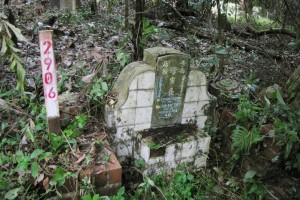
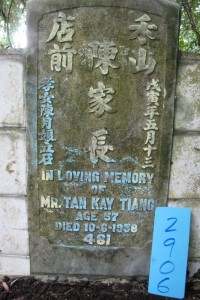

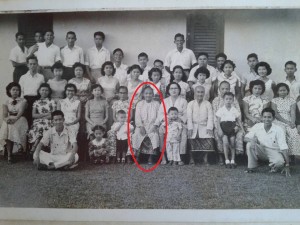

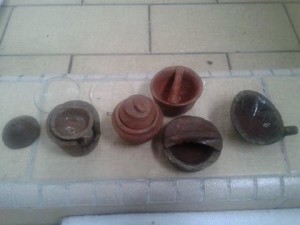

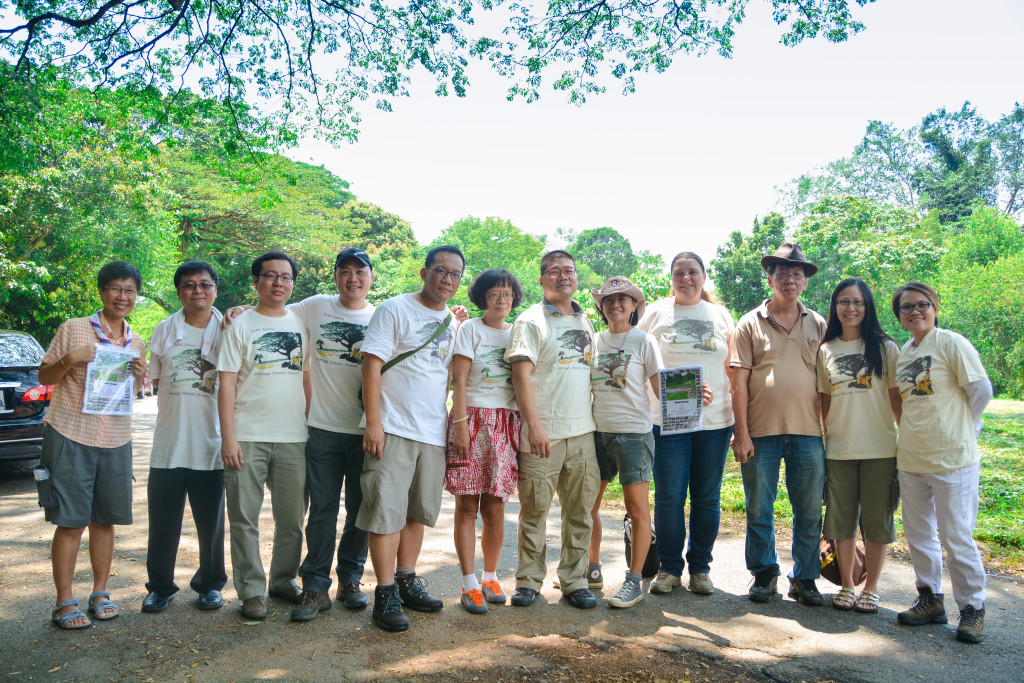
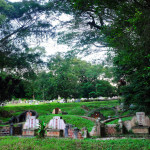


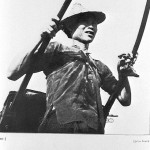

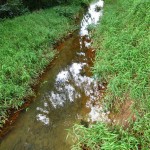




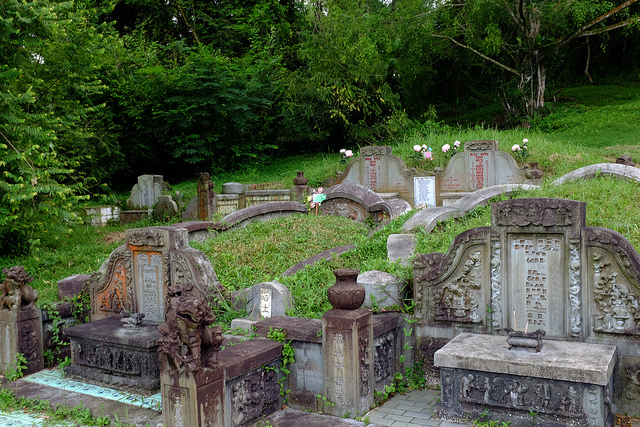
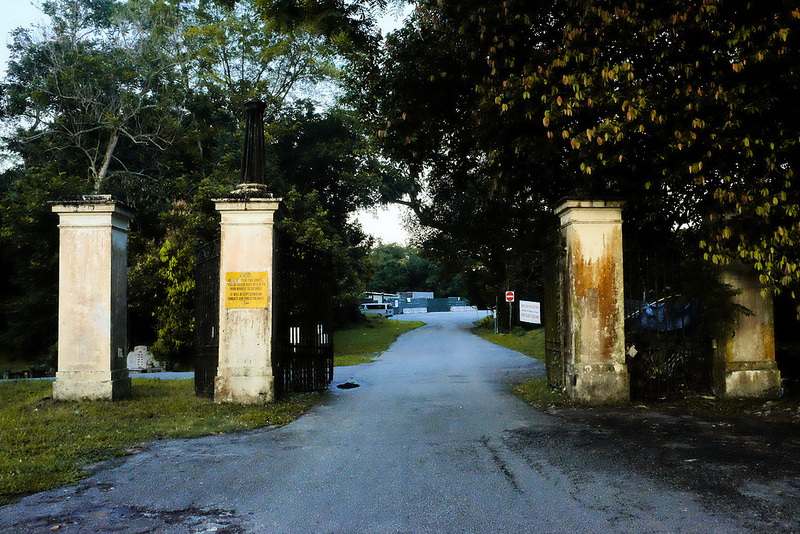
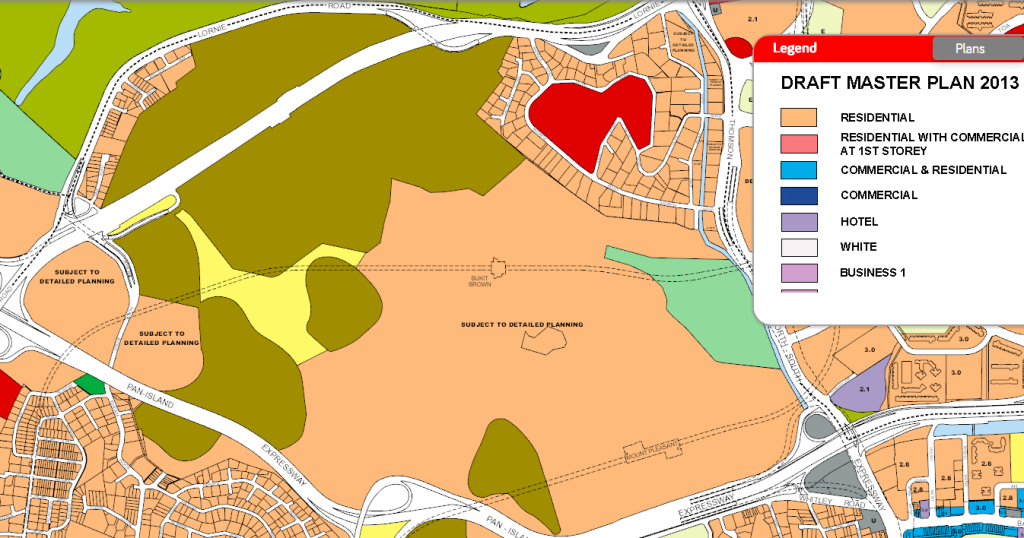
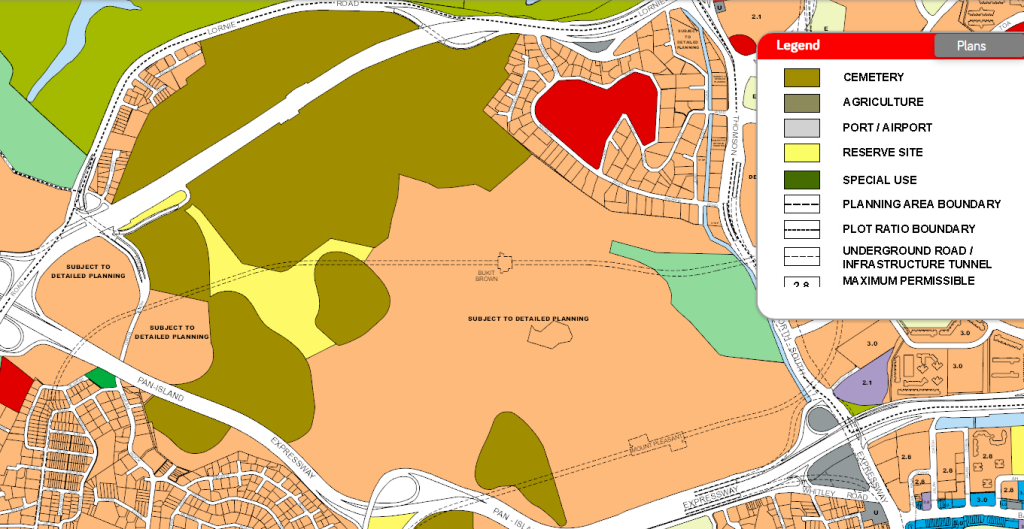
Recent Comments